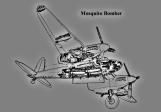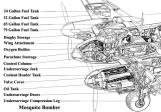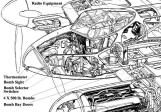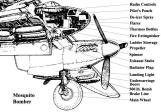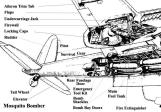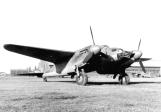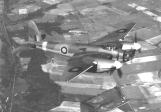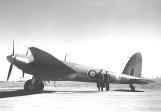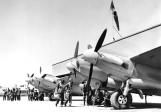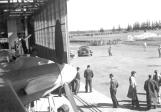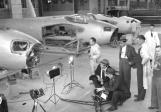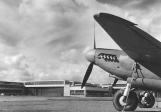1
De Havilland Canada produced Mosquito bombers in three editions: the B. Mark VII, based on the British B. Mark IV, with both British and North American parts; the similar B. Mark XX of all North American origin; and the later B. Mark 25 with more powerful Packard Merlin engines and paddle-bladed propellers. The prototypes were technically B. VIIs, but were painted all silver.The first 25 aircraft were B. VIIs from 1942 and 1943 and were essentially hand built under difficult circumstances. The parent company in England could spare very little help at the time. Drawings and parts were lost at sea, and the pattern aircraft was dropped on the dock at Halifax and badly damaged. Nevertheless, the first prototype was airborne within a year.
With the B. XX, 245 of which were constructed by 1944, the huge challenge of lining up all Canadian and American suppliers and sub-contractors was met. Small companies that had been making boats, furniture, or farm implements, were now manufacturing components for a sophisticated, high performance aircraft for the war effort.
12
The Packard Merlin 225 engines on the Mosquito B. 25 model boosted the available horsepower from 1,460 to 1,620 per engine, and were more reliable than earlier versions. This provided adequate performance for 1944 and 1945, and maintained the Mosquito's slim edge in speed over its rivals.However, the development of the Canadian Mosquito was limited because the superior Rolls-Royce engines with two stage superchargers were generally not available. These slightly longer engines moved the centre of gravity forward, allowing the bulged bomb bay seen on later bomber models, and significantly improving speed, ceiling and range.
The RCAF in Europe did not use Mosquito bombers at all, but operated various British-built night fighter, fighter bomber, and reconnaissance models. A few B. 25s were kept in Canada for training, but the bulk of the 400 built went to RAF Bomber Command and served with Nos. 128, 142, 162, 163, and 608 Squadrons from November of 1944.
